George Malyk starting working for the Dryden Paper Company on April 15, 1951. He commenced his employment as a helper for Carmen Gamble who was responsible for the operation of the wet press. George would cut, fold and pile onto a pallet sheets of ground wood pulp that were four foot square and one inch thick.
Pictured here is the Dryden Mill Operations with the flash dryer on right
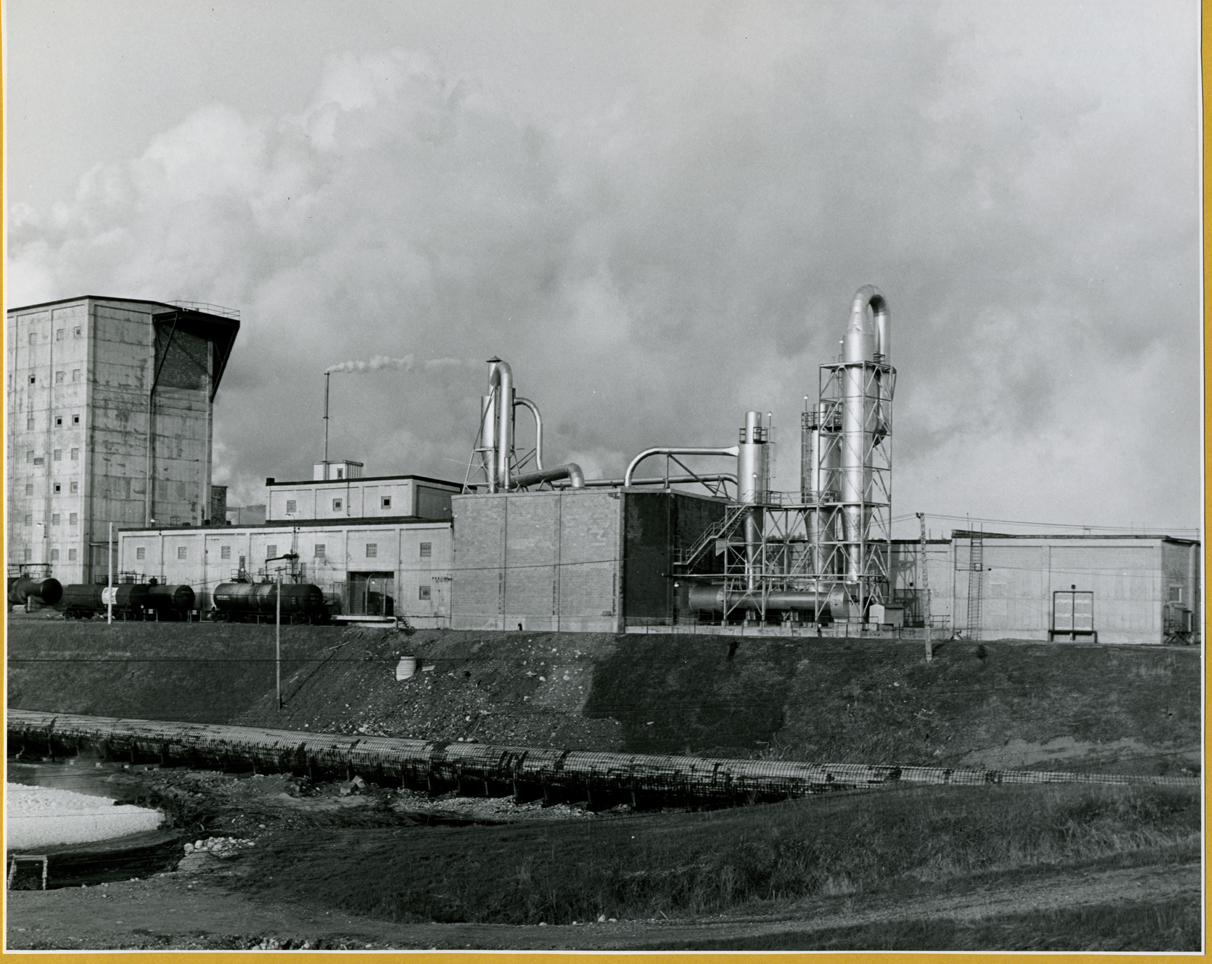
During the process of digesting wood chips, there were some larger wood particles, called “knots” or "tailings" that were not properly “cooked” or digested. These large undigested particles were screened and separated from the digested stock. The particles were further refined and ground into pulp using a "refiner". A refiner contained an internal grinder that ground and cooked these particles into stock. When these wood particles were fully digested the stock went on to a layer of felt that was 100% wool. This layer of felt was called the “wet press”.
The sheets of ground wood pulp were very hot. On top of the roll of pulp was a large steel holder that was ten feet across and had a long brass knife. The worker would pull a handle that cut across the entire length of pulp. The resulting layer of pulp (called a lap) was folded several times and piled on to a pallet. The sheets were then added to the beater when manufacturing lower quality paper, such as cardboard.
Another picture of the Dryden Operations. This photo was taken north of the main plant. This picture dates to the 1970s
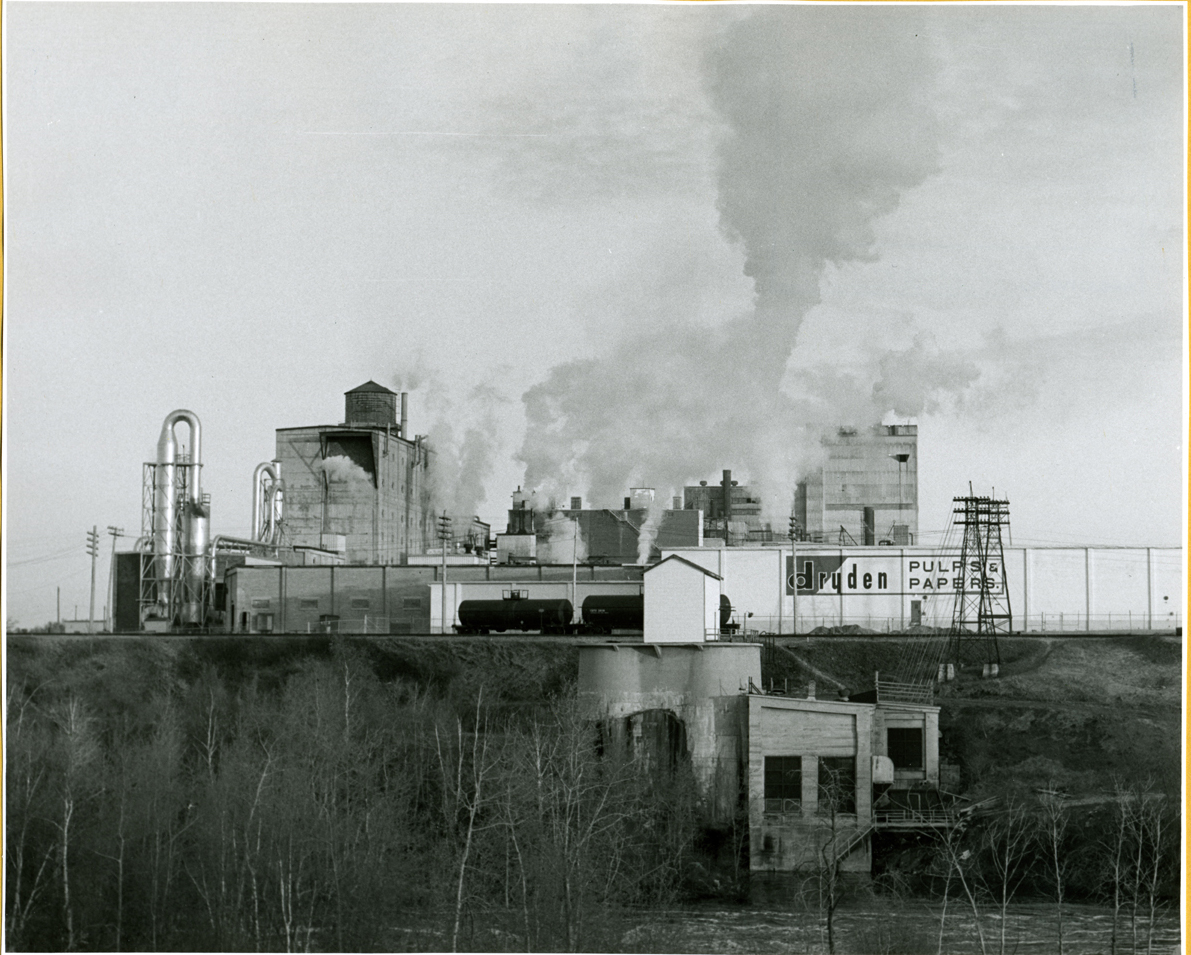
During his days off, George volunteered and came into the mill to cut poplar logs that were also ground into lower quality pulp by a large circular stone grinder. This lower quality pulp was added to pulp that was used to make lower quality paper used for wrapping products sold by department stores. This occured before products such as toys or household items were individually wrapped.
George then went on to the “dry end” of the Number one pulp machine. At the dry end of the pulp machine, the pulp had already passed through the various presses that removed the moisture from the pulp by exposing it to extremely hot hollow cylinders. This machine produced sheets of pulp that were thirty-two inches long and thirty inches wide. George would grab the sheets of pulp and place them on three inch diameter rollers. Working for long periods of time with hot pulp caused blisters on the hands which eventually formed into hard calluses. Next, the pulp was pushed along to the section where men would pile the sheets of pulp into a 500 pound bale. Workers would strap the bale with wire to hold it together. Any pulp product that was destined to an overseas market, such as England, had to be wrapped with pulp whereas pulp destined for the United States did not have to be wrapped.
Pulp bales that weigh over 500 pounds are being manually wrapped before they are sent off the to customer
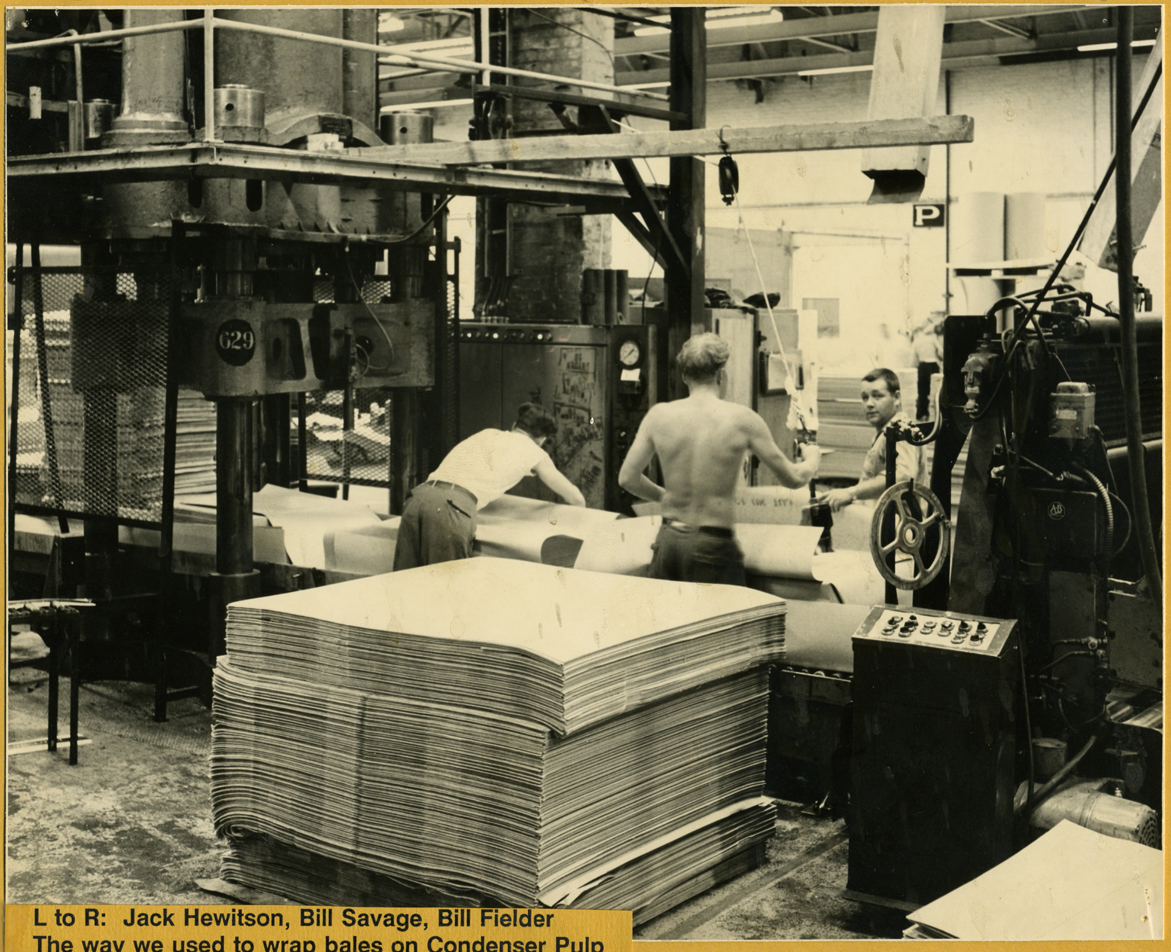
As time progressed, the customers made more stringent requirements and as a result all pulp bales had to be wrapped with pulp. After 1955, when the Dryden mill produced bleached pulp that was sold to companies such as Eastman Kodak, there was the requirement that the manufactured pulp be absolutely free of specs of dirt.
In 1957, with the rebuild of the Number One pulp machine, three more sections of dryers were added. These new dryers greatly increased the production capacity.A dryer is basically an empty cylinder where steam is injected giving the cylinder a surface temerature of 220 degrees Fahrenheit. When the pulp comes into contact with those cylinders moisture in the pulp evaporates and is removed by exhaust fans. Furthermore, was the introduction of a press called the “lay boy”. This machine would slide along steel columns and press the pulp into smaller and harder bales which were less likely to fall apart. George recalled a humorous story of one young man who used the bale press to iron his pants. Often employees would place their pants in between a few sheets of pulp and lower the bale press ever so slightly to press their pants, similar to a steam iron pressing any clothing item. However in this particular case, the young man used all the weight of the bale press and it cut his pants at the seam!
According to George, pulp had to often be threaded through the various dryers. To thread the pulp it had to be manually pulled through many hot dryers and when the threading was complete the dryers would be turned on and the process of drying the pulp as it passed through the dryers was automatic. While workers were manually threading they often received burns along their back and entire length of the arm. These incidents were not reported as injuries. Rather an ointment was rubbed into the burn and the worker continued on. Today however, even the slightest burn on one's finger has to be reported and filed as a work time injury.
Automatic bale wrapper that was used to wrap pulp manufactured by the flash dryer operations. This is a large bale of compressed pulp. Looking carefully at the picture one can see the six slabs of pulp that were compressed by the balemaster operations of the flash dryer.
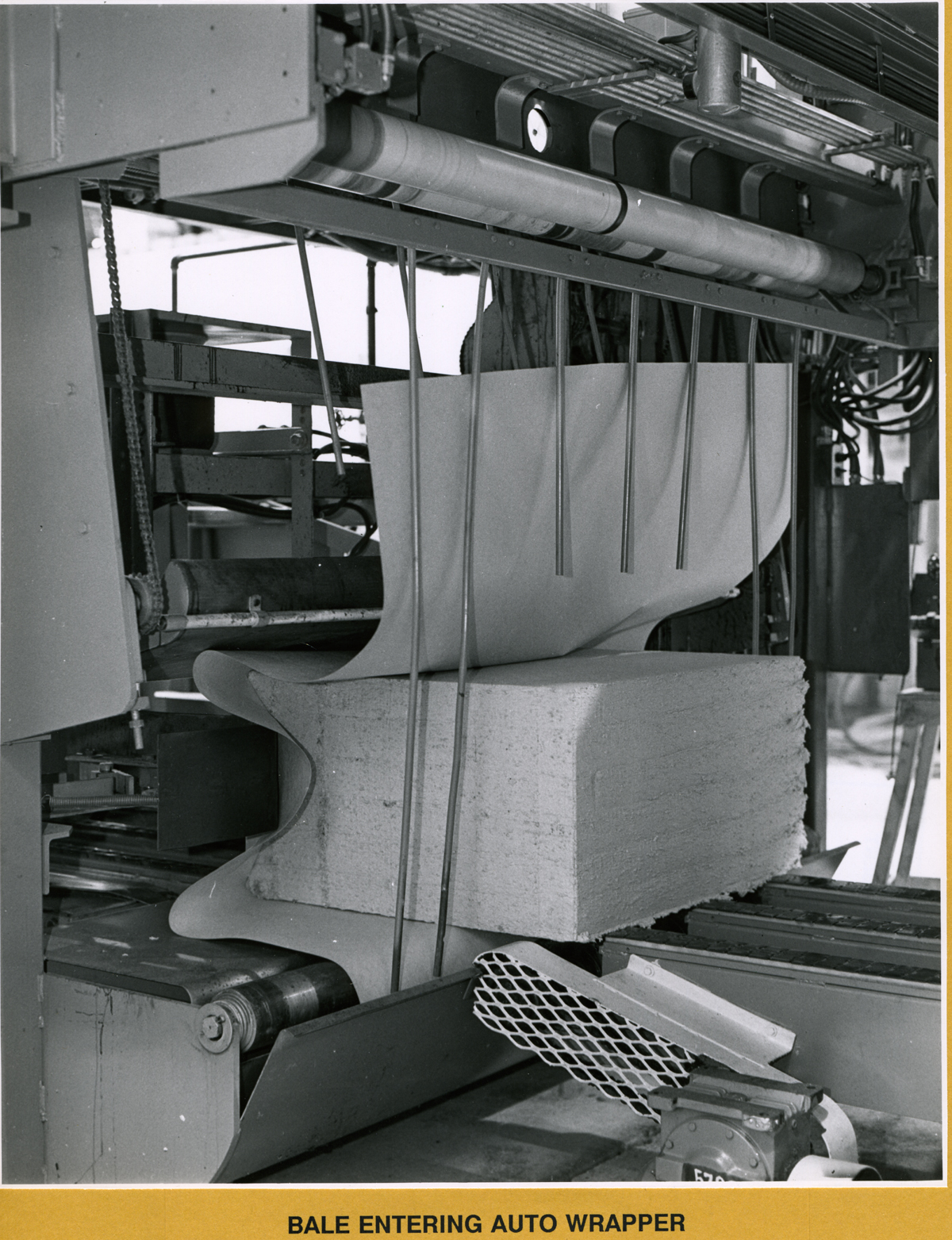
Mechanization continued and this brought about the operation of a stacker. After one bale of pulp was produced and automatically wrapped, it weighed about 500 pounds. The bale of pulp went on to a set of rollers that moved it to the stacker. The stacker would lower itself over the bale, and pick it up and hold it. This continued until the stacker had six bales of pulp, for a total weight of over three thousand pounds. The six of bales of pulp were then lowered onto a fork truck which would bring the bales over to the box car to be delivered to the customer.
Pictured here is the automatic bale master. With the flash dryer operations pulp was shredded and then dried and the balemaster would make slabs of compressed pulp using a hydraulic press.

As George continued working at the mill he advanced into positions that required increasing responsibilities on his part. He moved from a general helper and broke hustler to the second hand man. The second hand man was responsible for threading sheets of pulp through the presses and dryers. After a sheet of pulp was produced, workers would manually pass the pulp through the various presses and dryers. It would take a number of men working together to complete this process. One had to be careful since the dryers were extremely hot. Once the pulp was threaded through, workers would activate the machines and the pulp automatically passed through the presses and dryers. There were also slitters that cut the manufactured pulp into smaller widths so that it could be more easily packaged.
Soon, George was promoted to the third hand man. The third hand was responsible for wrapping the pulp and stenciling it with the customer’s name, type of pulp, and weight. However, when necessary, all employees were available to help with the threading process.
George further advanced to the back tender. Here, he was responsible for the “dry end” of the pulp machine. At this point, samples of pulp were taken, and tests were performed with results passed on to the machine tender, who was responsible for the wet end of the pulp machine. The machine tender would make adjustments to the manufacturing process to ensure that the amount of water used was adequate.
Another picture of the automatic bale master
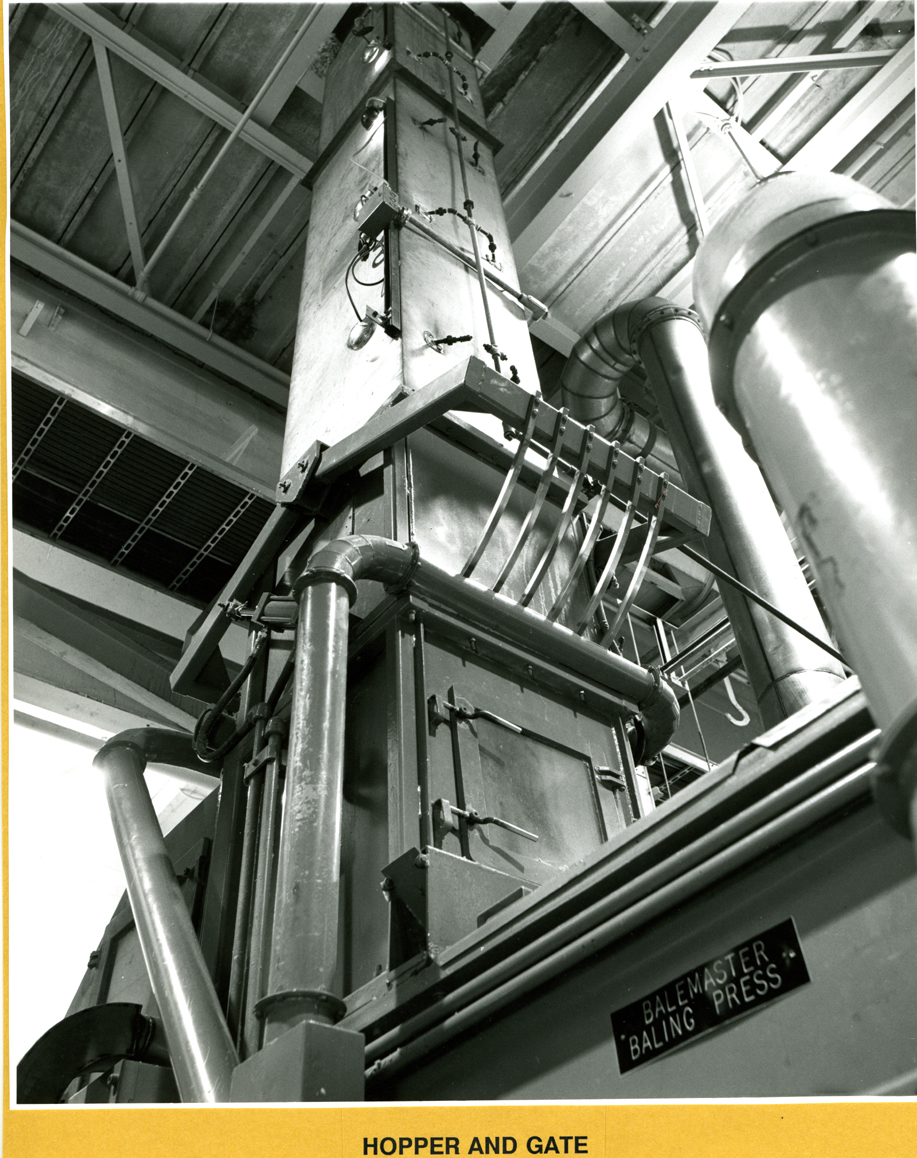
Finally, George went on to become the supervisor of the Number one pulp machine. Here he coordinated the work between the wet and dry end of the pulp machine. George remembers many long, sleepless nights as supervisor of the pulp machine.
George’s duties included a supervisory role of the diffuser and washer buildings. In the diffuser and washer buildings, the liquor used to dissolve the wood into stock was removed. This process is similar to rinsing out the starch from cooked spaghetti.
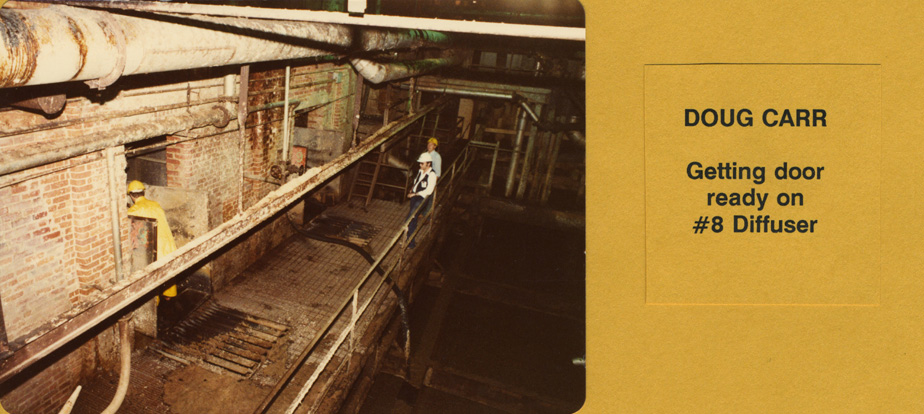
Stock that is to be washed out of diffuser
Washing out the diffuser
The Dryden mill had two sets of digesters. There were the six ton small digesters and the larger twelve ton digesters. The stock from the small digesters was passed to the diffuser and the stock from the large digester was passed to the blow tank and then to the washer building.
The blow tank was a temporary storage location for the cooked stock. An agitator in the blow tank stirred the stock.
In the washer building, water would pour over the pulp and drain out through the bottom carrying with it the corrosive liquors. The operator had to check the strength of liquor that was removed to ensure that all the liquor was effectively washed out.
The diffuser was similar to the washer, in that it too removed liquor from the stock, but it worked in a different way. In the diffuser, there were several drums that washed the stock with water. Vacuum pumps pumped the pulp on to the next drum where it was washed again with water. By the time the stock passed through the last drum, one was recovering clean water from the stock mixture.
A flash dryer was in operation for only a few years. Supposedly, it was to be a more cost effective way to make bales of pulp. Before a flash dryer was installed in Dryden, there was only one other in operation in Pensacola, Florida. The flash dryer installed in Dryden, was the first in Canada. A second flash dryer was installed in Fort Frances some time later.
A picture of the flash dryer. The red arrow indicates the flow of shredded pulp as it is dried
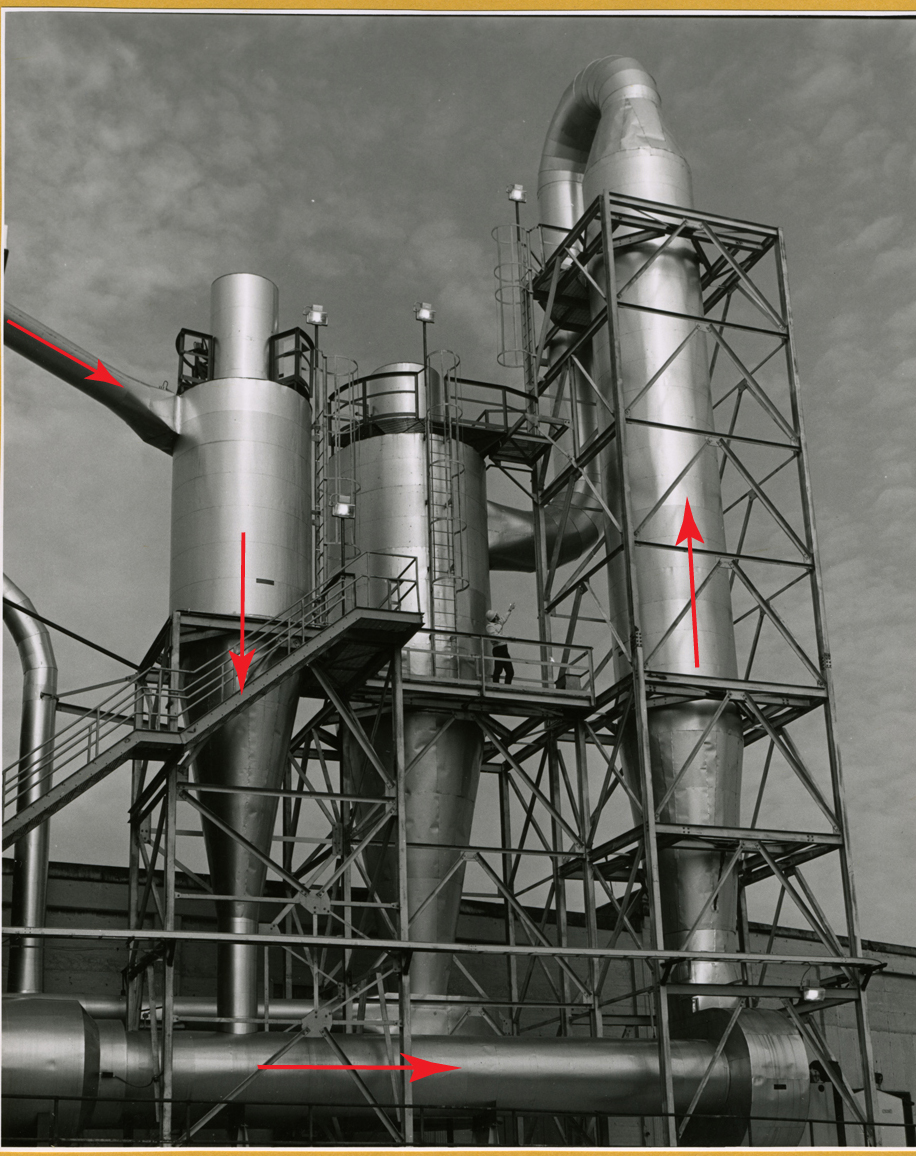
Pictured here is the flash assembly line. The entire process of shredding pulp, drying it, and packaging it was all automated. Only one person was needed to watch over the operations
Shredded pulp travelled through a series of tanks where it was dried by hot air. In the process of drying the shredded pulp, glazed particles of pulp were produced. These were considered to be contaminates. By increasing the drying rate to 95% and up to 98%, the production of glazed pulp particles was reduced, but there was an increased fire hazard.
In time, it was found that the flash dryer was not economical. Furthermore, it was prone to fires and finally the flash dryer only processed unbleached pulp. When Great Lakes purchased the Dryden operations from Reed paper in 1979, they dismantled the flash dryer.
Safety award given to George and his crew of men.